Let’s discuss racism in gardening and science terminology, what we actually mean by terms like invasive and why or if they even matter. What’s your view? Read on and please share in the comments.
As an ecological grower and landscape designer, and a lifelong conservationist, I’m increasingly finding myself wedged between the gardening world and the conservation world. My book Wild about Weeds has contributed to this because in it I attempted to bridge gardening and ecology to find a balance between the two. I hadn’t quite appreciated how far that book would go, and it’s sparked discussions with me from gardeners and scientists all around the world. From the USA, New Zealand, Australia, to Japan, Russia, Italy and many other European countries including back to the UK and Ireland. I find myself in a somewhat unique position where I have all of these connections and information, but it’s also quite overwhelming to deal with myself, so I’m going to share much of what I’ve learnt here.
I’ve also been grateful over the last year to have read a number of books and articles pointing out that the language both gardening and science uses has uncomfortable colonial undertones. In some cases this language can be used in a racist way, in other cases, cuts close to the bone; it’s upsetting for people by talking about plants and animals in a way colonialists used to talk about people of colour. Which upsets me too.
If that sounds like a lot to unpack, it is. All of these topics are woven together and have been weighing on my mind greatly over the last year giving me sleepless nights. Quite literally, and it’s getting a bit much. As a writer of things, I’ve found myself in a privileged position with many platforms and I’ve felt an obligation to try and come up with the right viewpoints and new language. It was only last week it dawned on me that sometimes it’s OK to ask for help and this is one of those times. These are topics for us all to discuss and solve together and I am asking for your help. To explain…
Native / non-native
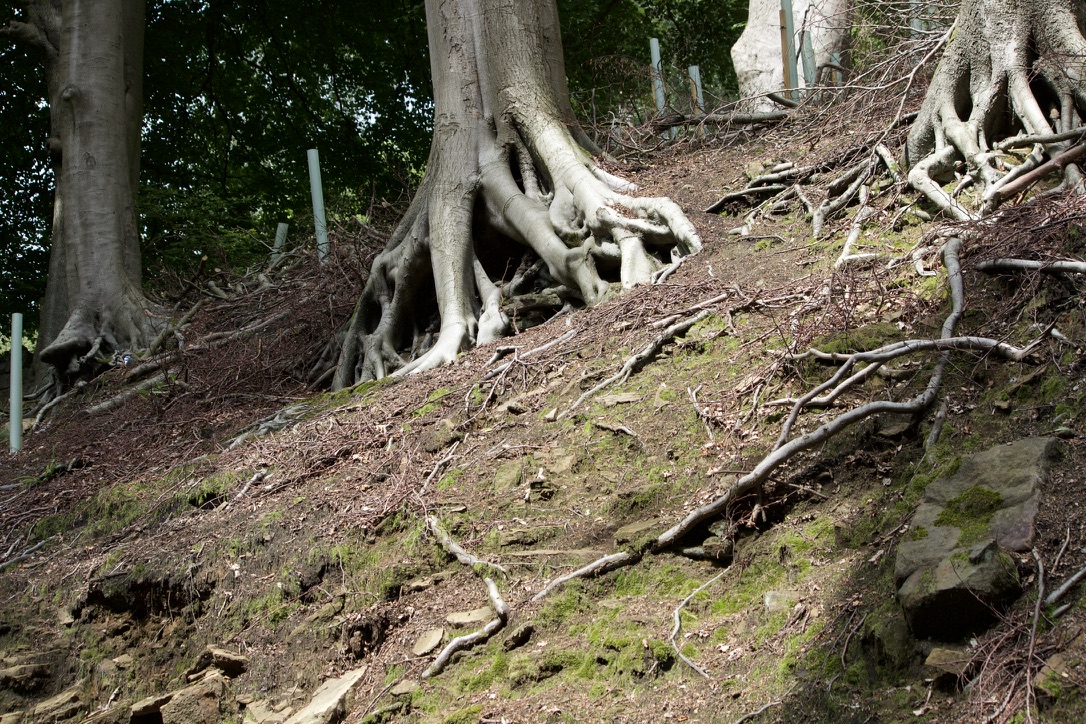
Let’s start with the word native. Firstly, I’ve begun using the word indigenous instead of native wherever possible to describe plants because it was brought to my attention by friends and articles in recent years that the word native can be problematic. ‘Native’ has two definitions / uses. On one hand, people use native to describe indigenous people which can often end up being in a derogatory way, intentionally or not, and on the other, it’s used scientifically to describe indigenous species of plant, animal, fungi etc as a literal way of saying they originate from a specific place.
The use to describe people is closely tied to colonialism and racism, where using the word native or natives to describe humans was used to degrade indigenous people when countries were invaded and colonised. Even today, to describe people as natives invokes colonialist views that are systemically imbedded into societies around the world. Equality and the word ‘native’ to describe people doesn’t quite work to me, it’s often offensive and indeed, racist. I haven’t used it in that way for as long as I can remember, if ever. But I remember reading it used in famous children’s books I read growing up.
Native in the scientific world of plants and animals has a very different definition that varies slightly depending on how people interpret a number of factors, largely: the start point of when something is considered native. Some people will say in the UK, that indigenous means since the start of the last ice age – because the ice age wiped out so many species, that this was a natural start point, others when the Romans invaded and introduced various plants (probably not nettles!) Because we have more data from these earlier time points, and it’s still so distant in our past, that we should consider them native.
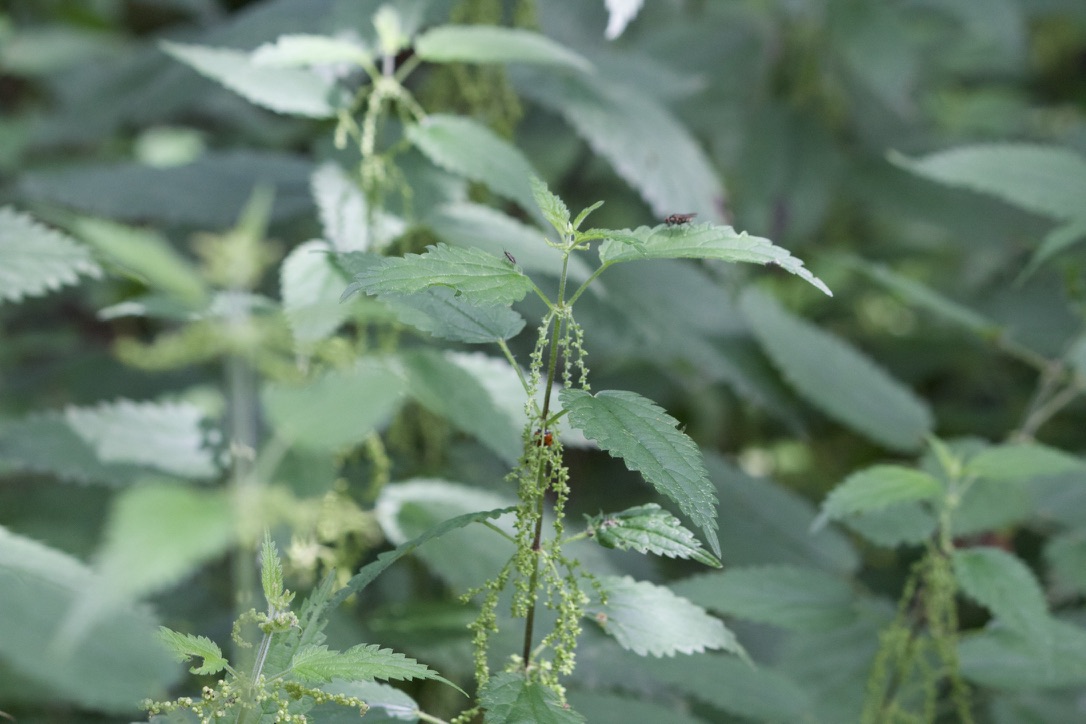
For the sake of simplicity I’m going to concentrate in this article on plants and I’m going to use the word indigenous going forward.
Personally I have always thought more globally than just the UK. To think only about one country leads to many errors. And I always strip out as much humanisation from the world of plants as possible – which is something humans are prone to, humanising other species to make sense of the world. But I also find this leads to errors. It’s a small thing, but this is why I roll my eyes when people refer to plants as ‘she’ or ‘he’. A plant is quite often monoecious or hermaphrodite… but anyway, it’s more about the humanisation of plants, rather than the light hearted poeticism of “isn’t she a blousy rose” that bothers me – so don’t feel bad if you do this.
My own definition of indigenous will change as I learn more in future no doubt, but I lean toward the following definition based on my own research and reading over the years. That an indigenous plant:
Evolved naturally in a particular area
This is somewhat complicated by the fact human activity will have an impact on evolution over time, but what I mean is the plant evolved in a location without humans intentionally or unintentionally transporting it or its seeds (I might throw in ‘by vehicle’ into that because there is a certain amount of natural transport by humans as with other animals). Nor did humans deliberately interfere with its evolution through breeding programmes, making it a cultivar. The area location can be smaller than a mile, or it can be thousands of miles in size, importantly it has nothing to do with country borders. I.e. it’s not helpful to say a plant is indigenous to the UK if we’re ignoring it’s indigenous to the whole of Western Europe including the UK.
This definition removes the arbitrary date range which is too muddled with the humanisation of plants. Of course, all of this is tricky because evolution happens over thousands of years, if not millions. It doesn’t happen on a human timescale and this means we rely on science to determine where plants evolved based on fossils, soils, rocks and other clues. Sometimes it’s possible to trace back the spread of a plant over hundreds of thousands of years to its likely place of origin based on things like DNA records or more obvious, concentrations of plant or location. E.g. if you look at the entire range of a plant and find it’s evolved to have variations across that range, but there is a commonality among all of them in one particular area, that may suggest it’s the point of origin (I’m over simplifying that but hopefully you get the idea).
But the reality is that we may never know every single indigenous plant species because even science can’t create million year old evidence where it no longer exists.
Indigenous and introduced plants and wildlife
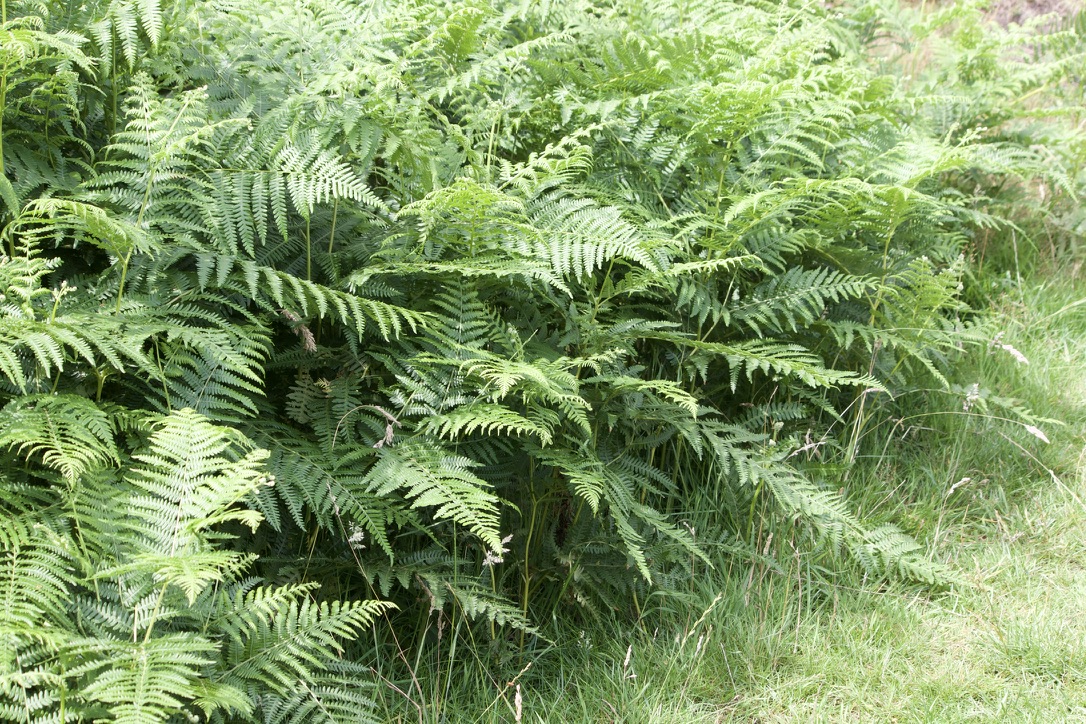
It’s coming up to two years since the release of Wild about Weeds and people have written to me from different countries with differing questions or views on indigenous plants and wildlife. Essentially, there is a debate around the world about the use of indigenous vs introduced plants and their contribution to wildlife.
I feel my viewpoint is fairly well covered in Wild about Weeds and future writing, but for the sake of clarity I personally see gardens and the wild as the same thing but with quote big differences between them. And they are obviously closely linked, not least by the natural world that uses both.
There are a number of studies of gardens now that show introduced plants from other areas can be as useful for wildlife as locally indigenous plants. Some, such as the recent biodiversity audit at Great Dixter, that the gardens can be as rich in wildlife, if not richer than surrounding wild areas.
However, there is a reality that ecosystems are fragile things and that while many wildlife species are adaptable generalists, there are a significant majority of species of wildlife, fungi, bacteria and other organisms that have very specific plants and conditions they need. It’s also not clear from garden biodiversity studies I’ve seen whether this richness in wildlife is caused by the garden or an effect of other local habitat reduction, pushing wildlife to the edge of their habitat range – hiding in gardens. The Great Dixter study is good because it recognises diversity of wildlife, whereas previous studies just counted numbers of pollinators. It’s no good if a plant is loved by thousands of honeybees when the many species of endangered bees can’t use it.
To my mind the solution in gardens is that we can continue to enjoy introduced exotic plants, but should be mindful of the local indigenous plants some wildlife can’t live without. I believe this is partly why Great Dixter was so good for wildlife, because it has a diverse mix of indigenous and introduced plants growing side by side.
From a race perspective, talking about “native being better” than introduced plants, without referring to the science, can quickly become uncomfortable. I hope most people would be saying this based on the science but some I’ve seen certainly say it because of their ingrained racist beliefs that are being pushed through gardening.
Either way, we need to be careful about wording and I’ve been finding it more useful and factually correct to add a little more detail, e.g. it’s better to say “the cinnabar moth caterpillar is incredibly dependent ragwort, which happens to be indigenous to the area”. That’s more accurate than saying all indigenous plants are better for wildlife than introduced plants, which isn’t true.
Invasive / non-invasive
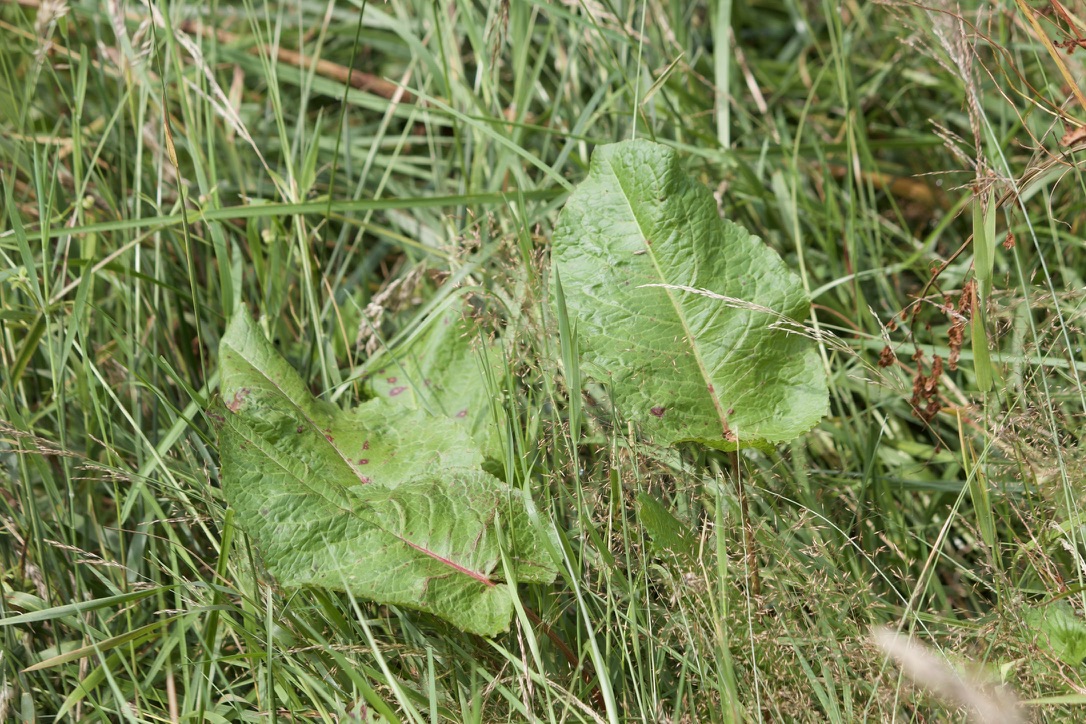
All of this is compounded when we throw the word invasive into the mix. The gardening and science world both use the term non-native invasive, which in itself is scientifically important, but culturally insensitive.
First, as discussed above, the term ‘native’ is awkward because of its other meaning to describe indigenous people. Second, too often people will use this to enforce racist view points. I don’t mean all scientists or the people who are genuinely concerned about the science of invasive plants and animals, but the less knowledgeable people in this area, or worse, people with a racist agenda. It might not even be as obvious as that, but if someone is racist, this gives them an outlet to make seemingly innocent statements about plants and animals with racist connotations in its undertones.
It’s important then, I believe, for everyone to be aware of this and to find a way of distancing the science from those people who misuse the terminology.
Terminology aside, I can’t get away from the fact that some plants and some wildlife are invasive, or aggressive – or whatever the word is. And they don’t have to be introduced, some indigenous species are equally aggressive, able to form vast swamping monocultures. Invasive is one word where there isn’t an obvious alternative, I’ve been trying to think of one, but it’s a multi-level word that means something like:
Spreading quickly and with negative impacts
It’s a term used in many walks of life from cancer and medical treatments to ecology. Disruptive feels like a possible alternative because it takes away the idea that the plant itself is the problem, when actually it’s just doing what it does best and growing and reproducing.
Outside of gardens, the world’s natural, truly wild habitats (and wild habitats can be a mix of places with and without human activity) have been destroyed by humans in the last three hundred years on such a large scale you’d think we’d have slowed down. We’re destroying what’s left faster than we ever have at any point in human history. And it’s happening all around the world, in north and south America, across Asia, Europe, Oceana, the entire planet.
Some people say the world has forever changed as a result, and we should give up and let the natural world adjust itself.
While I agree on the former point, the world is forever changed by humans, I can never, while I’m alive, agree with the second half (don’t worry if you disagree, I’ll be dead at some point within the next 70 years or so).
Humans have started the world’s sixth mass extinction but we have the minds and the resources to prevent it happening in full. It’s not true that the wild habitats left can’t be protected, and it isn’t true that they can’t be expanded back out.
But I also don’t think that means eliminating all introduced species to a puritan indigenous ideal that some people have. Not all introduced plants are invasive / disruptive and not all indigenous plants aren’t problematic. Instead, I believe in a more informed, science-led cautionary approach. Where each area of land and ecosystem is studied in its own right and decisions made sensitively and scientifically.
The US, Australia and New Zealand are countries where they’ve seen their habitats significantly affected by disruptive species. In some cases where colonialists invaded and took vigorous plants (and animals) to grow, that then reproduced explosively without animal, insect or disease to slow them down. To the detriment of other species indigenous to those regions. This happened many thousands of times faster than evolution of the existing species could ever hope to catch up.
We can’t rewind the clock but Australia and New Zealand have sensible measures to try and prevent any more species being introduced that may be problematic. In the US, some people are more militant and want to try to rewind the clock on some species. While I feel the views of some in the US are too extreme (i.e. only growing 100% indigenous plants in gardens, when so many introduced plants aren’t problematic) I think it’s important to also listen because it’s certainly not beyond the realms of human endeavour to find a way of removing the most problematic species from an area, such as eucalyptus in California.
In Europe (including the UK) we’re more blasé about problematic disruptor plants, we’re aware of them and their problems, and many wish we had a better control of them, but generally we’re a long way from the views of the USA, New Zealand and Australia.
Where does the right view sit? Firstly, I think we need to throw out invasive species hysteria, look at the science and take more calculated steps. Many plants seen as problematic aren’t as bad as some think. We also need to look more locally, going area by area rather than country by country. Plants grow differently in different habitats and there’s no point saying X plant is a problem all over the UK, when it might only be a problem on the beaches of the south east of England. Of course, we need to factor in climate change and global warming to make some projections into the future.
Ultimately it feels the right approach is to be somewhere in the middle. The UK and Europe does need to be stricter and does need to take more action to prevent, slow down and control some disruptive species. But we mustn’t let this lead to all introduced plants being painted as evil. A measured and informed approach is better.
Wildflower or weed
While you’re here, I’ve been thinking about the terms weed and wildflower a lot. Like many people, I didn’t like the word weed because – as I made the case in Wild about Weeds, the book’s entire purpose – I see plants as plants. It’s just that they grow differently in different conditions and in gardens we have our preferences for the plants we like to grow.
But we can’t call weeds in gardens wildflowers because by the very botanical definition, a wildflower must be wild and not in gardens. Also, weed is another of these words that has multiple parts to its meaning. Weed and Weeding aren’t just negative, they’re also a positive way of identifying and removing problematic plants – and let’s face it, some plants are problematic in gardens. And that’s before we’ve even covered the use of the terms weed and weeding in farming.
Volunteer or self sower are good terms for ‘weeds’ we like the look of in gardens but, like invasive, I’ve found it hard to find a word to totally replace all of its meaning. Perhaps we just need to come up with two new invented words and just agree they are the new invasive and weed. I’ll suggest spreadybad and irritant, suggest your own in the comments. [More seriously, I like some of the suggestions in the comments, outcompeting or problematic might be a good alternative to invasive, I quite like disruptive, or something along those lines, as this moves us away from colonialist structures and ideals].
Wilding – the changing face of conservation
I guess it’s worth pointing out that my definition of conservation has always been in line with wilding approaches that people now call new. It means taking a step back to let nature do most of the work rather than tightly controlling everything ourselves. We act as stewards or guardians of the land rather than tightly controlling it. The book Wilding by Isabella Tree sums this up well if you haven’t already read it, though it paints an overly negative image of conservation efforts in the past. When in fact many were wilding/rewilding before these terms existed in everyday vernacular.
If you haven’t read it yet, do, but essentially wilding means just that, letting land return to being wild. Important are some key species such as large grazing animals to keep scrub under control and grasslands open. A good example of wilding, as Andrew O’Brien pointed out, is that wild boar can control bracken by uprooting it as they dig for worms and other bugs. In the UK humans hunted wild boar to extinction along with many large herbivores and, in turn, large predators to keep their numbers under control. Wild boar were ‘accidentally’ released back into the wild in the UK where their presence is helping ecosystems again.
Nature knows best and happy ecosystems without human meddling, but with out oversight, balance out. Conservation is about getting as close to this as possible. If we give land back, nature will look after itself. In the meantime, humans will have to step in to lend a helping hand.
What are your views? What do you think? Help me out by discussing below.
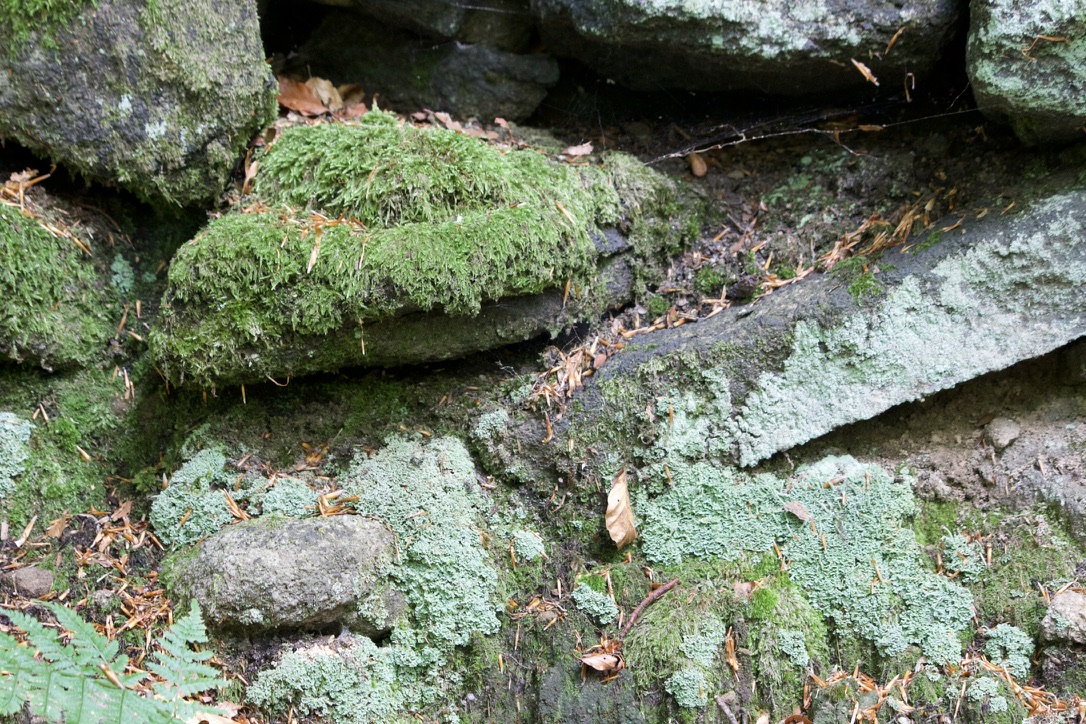
I don’t think any of us will know all of the answers to some of the topics raised in this post in our lifetimes, it’s impossible to fully understand every ecosystem around the world right now. We don’t know enough about the natural world to say some things for certain. But if we discuss these topics, look to science and respect each other’s view points, we’ll navigate things together at a point where we’re running out of time to at least protect what little is left of the world that humanity hasn’t already destroyed.
If we can untangle the science of the natural world from the colonialist language that feels like a good starting point. While accepting the natural world is deeply nuanced requiring deep understanding of ecosystems, habitats and environmental conditions, often to a very localised area. But to be positive, recognising we can also play a part in protecting and reestablishing natural habitats with modern knowledge. Don’t give up just yet.
Further reading
- Non-native: not indigenous or native to a particular place (Claire Ratinon)
- Don’t judge species on their origins (Nature)
- Biodiversity and the use of nativist language (Guardian)
- In the white world of gardeners and farmers, growing food feels like a radical act (New Statesman)
- It’s time to decolonise botanical collections (Kew)
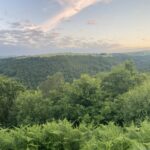



I cringe when I hear terms like “native” species, and hear how worthy conservationists are exterminating “foreign” ones. Cannot help but fear it feeds into the discourse about humans.
Hi Wendy, what terms would you use instead?
Exuberant or Boisterous (invasive) and Uninvited (weed), ushering out the uninvited (weeding)
Those are great. Uninvited plants certainly seems to work!
I agree with you re the use of indigenous over native due to the reasons you outlined. Personally I try to make sure that I only grow plants that won’t easily ‘escape’ into the wider environment except in my wild area which is as close to the historic range of my area as possible. This feels important to me as I live directly opposite Epping Forest.
Of course there are historic and colonial biases in horticultural areas, they are strewn liberally throughout Western mindsets and that lingers on. Horticulturalists, gardening presenters etc could help to partially confront these biases by not propagating the ‘discovered by’ thread in general. Garden explorers are an important part of our historic collections of plants BUT purely using the term ‘discovered by’ rather than ‘First European’ or ‘Introduced to the West by’ seems a more respectful terminology. Indigenous peoples knew more about the plants and animals populating their homelands than any explorer ever could, including food and medicinal value. To blithely ignore this, whether purposely or not, is highly disrespectful and perpetuates the myths that knowledge didn’t exist before Western eyes studied and collected plants for their own homelands.
It isn’t difficult to find this quasi academic legacy in any library or prestigious garden. I think it should be addressed urgently.
I know many gardeners of different cultures who have a wealth of gardening wisdom yet they aren’t included in mainstream gardening culture. Racism needs to be firmly kicked into the long grass to rot away, hopefully allowing beautiful blooms to take it’s place and make gardening a truly organically organised space.
Hi Julie-Anne, yes I totally agree about explorers and looking back to the original names of plants. I’d like to see those incorporated into a revamped binomial system. I know that in itself is built on colonialism but it works well for categorising life on earth. But we can certainly do more to work with local communities around the world to change the rules of naming away from how it works now.
I agree about making intelligent decisions about spreading plants too, and keeping the worst away from anywhere they can escape into the wild.
And we can high five to kicking racism into the long grass!
Jack
Hi Jack. This is a thought-provoking article.
As a fervent linguist as well as plantsman and countryside resident, I do worry about turning away from certain words because of a historical period in their use. I fear this can only lead to the degradation of language, where more and more of the vocabulary falls away, with nothing new to replace it.
Ultimately the words “native” and “indigenous” both mean “born in” somewhere. I feel we should re-appropriate words and reinforce their positive meanings, not cast them aside out of shame felt at the actions of others. In the end, we cannot stop racists or bigots from misusing any element of the English (or any other) language. We can only control our own minds, words and intentions.
Of course, if individuals feel uncomfortable with a particular word, it’s their right to avoid it. I only hope this isn’t to the impoverishment of the English language and confusion in scientific circles.
Hey Kevin,
Yes, we might be here all night if we start working our way through the worst words in the English language… that said, sometimes if there are alternatives it’s useful to look for them. There are some words, particularly around race, which are so negative that we stop using them. I just worry that some of this terminology in horticulture and botany might be in that category, we just haven’t ever stopped to consider it.
On a more positive note, we can always create new words too and new words are born every day. We all have the power to invent new words 🙂
Jack
Hello Jack,
in Australia there are a lot of native plant growers who insist on only growing plants that originate in Australia. However plants from Western Australia are actually further away from us on the East coast than plants from New Zealand! Habitat is probably more important.
Australian wildlife have also adapted to feeding on exotic plants as can be evidenced by nectar feeding birds which love fuchsias and abutilons. Also the parrots which have learned to dig up and eat the corms of Romulea rosea which infests a lot of “waste” land around us (unfortunately they also do to same to crocus!).
As a gardener I want to grow as many plants as I can! Especially ones I like and not all of them are indigenous. I mix local and exotic plants together depending on their requirements, e.g. growing things that have similar watering needs together so they benefit from the same watering regime.
Your point about “invasives” is probably the crux of the matter. We try not to grow things that will get out of hand by self-seeding through the garden and then out into the surrounding areas. When I was given Caper Spurge by a friend he warned me not to plant it within 2 metres of the fenceline – to be sure it wouldn’t escape into the bush!
cheers
fermi
Very eloquently put Fermi, I agree with everything you’ve said there. I feel sometimes there is a lot of pressure from people who aren’t fully versed in this area to grow only indigenous plants. Particularly from North America right now. But I think you are right, it’s about understanding plants and how they behave. Then there is no real reason to avoid certain plants unless you really need to support more wildlife in your area.
Jack
First of all Jack thank you for opening this conversation. As you say language is important end much of the language we use in gardening is soaked in colonialism, including of course, the fact that Linnaeus classified everything with absolutely no thought about its traditional uses in indigenous cultures across the globe.
Just to add to the mix, whilst I like the word indigenous for plants, I’m very aware that in the UK the right wing has coopted that word and the conversation about indigenous peoples in the British isles has become deeply toxic and problematic. Of course in reality there’s very few truly indigenous folk in the UK.
What I’d really like to see is these indigenous plants recognised and their common names used more, because they do often explain their uses far better than dear old Linnaeus’s classification!!
But thank you for this article Jack. Thought provoking and a very important subject.
That’s interesting, I didn’t know that about the word indigenous. Does that mean racists will just work their way through whatever words we come up with? Obviously I can’t stand racist extremism. I really think we have to find a way to separate the discussion about humans from plants. It’s where problems come up.
I would love to see pre-colonialist (or modern local) names and terms incorporated into the botanical plant names. I know that this is planned to happen soon, and it will be very welcome when it is.
Thanks Sara! This whole topic is so big I’ve been struggling with it all but it’s great to discuss it even if it means I’m making my own mistakes.
Jack
It isn’t the words themselves, but the context and content in which they are used.
If you are using ‘native’, ‘indigenous’, ‘invasive’ in a the context of a discussion about plants and animals, then you cannot be held responsible for those who choose to either be offended, or to misuse as an example for expressing racist views. That is their choice and not yours.
If you are clear about what you believe in and live by it, then you have no reason to lose sleep worrying about the beliefs and choices of others.
I’d like to believe this, but I’m not sure I can agree because sometimes the very structure of how we live is built on certain belief systems that are wrong. The words may seem innocent enough but they force us to talk in ways that make us view the world in a certain way. It also empowers people who abuse the terms to then go “that’s not how I meant it” when they did.
Interesting subject Jack, but I can’t help feeling moving from horticulture into ethnography isn’t a useful exercise.
Another comment brings up the linguistic angle too. ‘Indigenous’ has its roots in the Latin ‘indigena’, meaning ‘a native’. So effectively they’re two sides of the same coin.
Having studied, and met, many Native Americans, it took them a long time to become recognised as such, rather than ‘American Indians’. To suggest they should now lose the ‘native’ tag could be seen as ‘colonial’ interference too.
That might not be the case in other cultures.
Leaving cultures to decide for themselves what they’d prefer to be known by seems to be the best tack (and of course, there will be disagreements within those cultures too).
Back to plants, however, it’s curious to see how long it takes something to become ‘indigenous’.
You mention the Romans and nettles. I’d heard that Sycamore trees were similarly brought to us by them (along with Dormice, which they enjoyed eating). Today, the latter are protected and revered. The Sycamores though seem to harbour little in the way of wildlife, and outgrow their welcome very quickly. Then think of conifer plantations and their effect on moorland/bog communities. Or our (very colonial) Victorian forebears and their fondness for bringing back Rhododendrons et al, and the impact on the UK countryside.
Context is everything. Gardeners often refer to a plant that’s popped up, unplanned but welcome, as a ‘tourist’. Those not so welcome as ‘alien’. If they’re particularly aggressive growers they become ‘thugs’. All more subjective, and emotional terms than ‘native/indigenous’.
I should clarify that this discussion comes from people of colour and other cultures around the world, I’m just echoing some of the articles I’ve read – I’ve added some links now to the bottom of the article. I totally agree cultures should decide themselves, this was intended for a mixed and diverse discussion not me telling people how to be. I’ve added some of my views to start that discussion, not enforce the views on anyone.
The one thing I know is that many people are saying this is a problem the world over, so to sit out of that discussion doesn’t feel right to me.
I totally agree with you that context is everything and the number one starting point. Anyone still taking a stance that introduced plants = invasive needs to reflect and research this more carefully. That would be a good first step.
Jack, even using ‘people of colour’ is potentially offensive/racist (i.e. not white/European by definition). Again, taking human interactions and politics and interjecting them into everything isn’t necessarily useful.
As for the Native Americans, they first started objecting to US sports teams appropriating their culture back in 1970 (think Washington Redskins, Kansas City Chiefs, Cleveland Indians, Atlanta Braves). But it wasn’t until the George Floyd/BLM actions over the past few years that they’ve finally changed names.
And we’ve still got the Exeter Chiefs rugby club here in the UK with a headdress-wearing club mascot.
I’m a big fan of grasses, and one of my favourites is Panicum virgatum. Yet cultivars being called ‘Cheyenne Sky’, ‘Squaw’, and ‘Warrior’ are all a bit jarring.
The far right movement you refer to could equally be termed ‘invasive’ (or we wouldn’t be discussing it). Perhaps one way is to reclaim language for everyone, not reject it just because a vocal minority have tried to adopt it?
You’ll have to look very deeply indeed to find aspects of terminology and language that haven’t to some degree been affected by colonialism. Whether in horticulture or not. Using that for political ends is another matter entirely.
One of the first things horticulture should do is review those kinds of cultivar names as they’re the most easily changed – if they need to be.
Reclaiming language is no doubt part of the way to go. But ultimately I can’t see any problem with scrutinising wording from its origin up. The world has a problem with systemic racism, particularly in the UK. It could mean reclaiming words, using others or creating new ways of talking about something.
The main thing is that people say that this is a problem, excluding in some cases, enabling racism in others. The reasons make sense to me and it would feel wrong for me not to explore that more. It could be only a single person saying this and it would be important to me to explore it.
I don’t think many people have a clear idea of what the word “indigenous” means where as most people understand that a “native” plant comes from a particular, the same as I would call myself a native of Edinburgh. I’m being deliberately imprecise here because nature is imprecise about categories. It is only us human beings that are determined to put everything neatly into boxes.
While “native” can have negative connotations most of the time it doesn’t so I’m quite happy when someone describes a plant as native or non native. Let’s not get too hung up on terms that will never be a perfect fit but rather make sure that people understand an organism’s heritage and biology rather than merely trotting out a few terms that ultimately tell us little.
I think this largely very logical and I agree that context and informed statements is a good starting point.
My worry is that around the world many people have pointed out that all of the terminology horticulture and botany (and almost all other walks of life) have foundations in colonialism and so the entire structure is biased to that world view. Which leads to people of certain background and cultures to feel unwelcome by some of the terminology.
It’s good to talk about and reflect on it anyway.
Such a thought provoking article. I couldn’t stop thinking about it all day.
I have never been comfortable with talking about plants (or people) being native or indigenous, as who defines the baseline of what is permitted and what is not. People think of things like horse chestnut trees and potatoes being from this country – but both were imported. Does this make them less entitled to be part of our countryside? (which was itself created by man’s activities clearing woodland in order to farm).
Nature is living with the world as it is, and I’m all for an attitude of live and let live.
I’m a very slack weeder and as a result the birds and the wind have planted many different free plants in my garden. Some are wildflowers/trees and others are cultivated ones but I welcome them all and only pull out the ones that I don’t like, or don’t want to grow in the place they have chosen to appear. If my garden has both wild and cultivated plants then I assume that the nearby countryside is the same, and only a small number of plants manage to find a home in the wrong area causing a problem.
The unpopular plants exist already. They are here due to the past actions of people and we need to learn how to live with them. Invasive plants are only ones that have found a suitable habitat for themselves where they are able to thrive. They soon disappear when conditions change. An example of this is the dandelions in our lawn, and in a nearby green space. Both areas have had long grass for the last 2 years, and the number of dandelions has significantly decreased.
I know that this is not a popular view but I see no reason to fight against plants other than by planting things to ensure that you do not have patches of bare earth where unwanted plants can establish, and occasionally removing things that are growing in the wrong place.
The debate around language and words used is one which, as a teacher and a NZer, I find very interesting. I have only recently become a gardener and I have used the words native and invasive casually without thought of the wider implications. I would never use the term ‘native’ to describe a person – perhaps that is because I am very aware of how racist that would be, a legacy of our own colonialisation. Having worked in education for over 20 years, I am perhaps more aware than others of how language can be used to belittle and hurt others. Perhaps it is the emergence of our indigenous culture and language to a place of acceptance, pride and respect that enables me to be more careful with my choice of language in my day to day life. I think challenging people around their choice of words is courageous and I applaud you. It is so easy to be complacent and say this is what we’ve always done. By changing the way we use words we will eventually, over the next little while, hopefully exterminate racist language from all walks of life.
Thanks for the thoughtful post Gaby. Ultimately I’m just relaying what other people have raised to help further the discussion and keep it alive – and also to try and help me work through it in my head. This has already been useful as I think my own views have changed this week but I’ll keep listening to what others have to say.
I think the whole way people categorise plants (and other living things) should be re-examined, because so many of the terms used are unhelpful at best , and at worst impact negatively on other beings.
There’s a lot to unpack here. It will be painful for some, and there will be more questions than answers, but eventually we could end up with a better way to understand the living world around us; and ultimately to better protect it.
As an archaeologist I’ve always struggled with the idea of native plants. I’m sure that part of the reason we struggle to define ‘native’ plants is because we’ve not really started from the right place. We have an idea of what British plants should include and we place our definition of native in a chronological position that works to reinforce that view, whatever it happens to be. Britain is such a managed landscape, and has been for so long (I’m thinking thousands of years), that part of me feels that it’s pointless worrying about how long particular plants have been here: perhaps we’d be better off forgetting the whole thing and concentrating instead on what landscapes (perhaps also the wrong word, but I can’t think of the right one) we value and doing what we can to support them. Which I think is roughly what you said. Of course, Homo sapiens isn’t entirely a native species here anyway! I’ve also always loved finding out about species that used to call Britain their home – pelicans lived in the Fens in the Bronze Age, for example and things must have looked very different in the days when aurochs and wolves wandered around the place.
Also as an archaeologist, I wonder how much of the ‘native’ flora of this country we really know about – so much depends on accidents of preservation. Our reconstructed pasts are always to a degree stories because of what we don’t find and where we don’t look. I’m not suggesting that we’re missing thousands of super-common species, but our vegetation reconstructions must be very biased by preservation and our own preconceptions. That might mean that our idea of a native ecosystem is not entirely correct (if we accept the idea that a native ecosystem can exist).
We also love talking about Roman introductions, but people have been (deliberately and accidentally) introducing plants for much longer than that. Is a plant non-native if it arrived caught in the fur clothing of a Mesolithic wanderer before the Channel disappeared under water?
As for terms, I agree that native isn’t helpful for Britain. I’m in two minds about indigenous, because of the far right connotations in this country (In other contexts I’d certainly use it). But ultimately, any words that we replace them with will develop similar connotations if attitudes don’t change.
In South Africa we have changed common names which use the K-word (as they say in USA) We now call it coral tree. USA gardeners use native, where I use indigenous. Native is definitely not PC here.
We are in the South-Western Cape, mediterranean climate and fynbos. I have had to learn that indigenous to South Africa is not happy in my garden unless it is fynbos.
Then mountain fynbos (as you wrote for your new garden) is used to cooler and wetter than our valley garden. Delighted that a new lowland fynbos nursery has opened. Now launched on a third attempt to grow plants suited to my garden.
Australian wattles are invasive aliens – and that expression makes my Swiss husband think of xenophobia.
What grows in my garden that I didn’t choose and plant, is a volunteer not a weed. Unless it is an invasive alien.